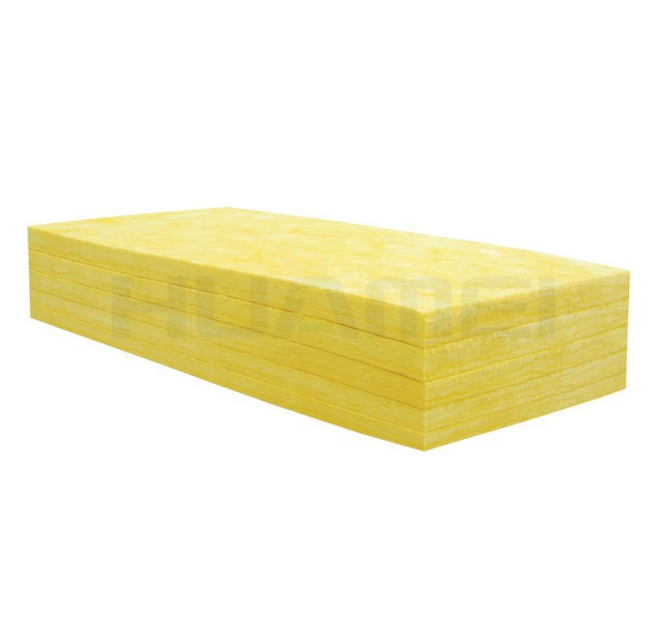E-mail: marketing@hbhuamei.com
Centrifugal glass wool is a porous sound-absorbing material with good sound-absorbing performance. The reason why centrifugal glass wool can absorb sound is not because of the rough surface, but because it has a large number of tiny pores and pores connected inside and outside. When sound waves are incident on the centrifugal glass wool, the sound waves can enter the material along with the pores, causing the air molecules in the pores to vibrate. Due to the viscous resistance of air and the friction between air molecules and the pore wall, sound energy is converted into heat energy and is lost.
Sound absorption performance:
Centrifugal glass wool has good sound absorption performance for mid and high frequencies. The main factors affecting the sound absorption performance of centrifugal glass wool are thickness, density, and airflow resistance. Density is the weight of material per cubic meter. Airflow resistance is the ratio of air pressure and air velocity on both sides of the material per unit thickness. Airflow resistance is the most important factor affecting the sound absorption performance of centrifugal glass wool. If the flow resistance is too small, it means that the material is sparse, the air vibration is easy to pass through, and the sound absorption performance is reduced; the flow resistance is too large, it means that the material is dense, the air vibration is difficult to transmit, and the sound absorption performance is also reduced. For centrifugal glass wool, the sound absorption performance has the best flow resistance.

In actual engineering, it is difficult to measure airflow resistance, but it can be roughly estimated and controlled by thickness and bulk density. 1. With the increase of thickness, the sound absorption coefficient of medium and low frequency increases significantly, but the high frequency changes little (high-frequency absorption is always large). 2. When the thickness remains unchanged, the bulk density increases, and the sound absorption coefficient of mid-low frequency also increases; but when the bulk density increases to a certain level, the material becomes dense, the flow resistance is greater than the optimal flow resistance, and the sound absorption coefficient decreases instead. For centrifugal glass wool with a bulk density of 16Kg/m3 with a thickness of more than 5cm, the low-frequency 125Hz is about 0.2, and the sound absorption coefficient of the medium and high frequency (>500Hz) is close to 1. When the thickness continues to increase from 5cm, the low-frequency sound absorption coefficient gradually increases. When the thickness is greater than 1m, the low-frequency 125Hz sound absorption coefficient will also be close to 1. When the thickness remains the same and the bulk density increases, the low-frequency sound absorption coefficient of centrifugal glass wool will continue to increase. When the bulk density is close to 110kg/m3, the sound absorption performance reaches the maximum, 50mm thick, and close to 0.6-0.7 at a frequency of 125Hz. When the bulk density exceeds 120kg/m3, the sound absorption performance decreases because the material becomes dense, and the mid- and high-frequency sound absorption performance is greatly affected. When the bulk density exceeds 300kg/m3, the sound absorption performance decreases a lot. The thickness of sound-absorbing glass wool commonly used in architectural acoustics is 2.5cm, 5cm, 10cm, and its bulk density is 16, 24, 32, 48, 80, 96, 112kg/m3. Usually use 5cm thick, 12-48kg/m3 centrifugal glass wool.
The above information is provided by fiberglass wool supplier.
Copyright © Huamei Energy-saving Technology Group Co., Ltd. All Rights Reserved | Sitemap | Privacy Policy
Insulation solutions LIST: Insulation solutions LIST